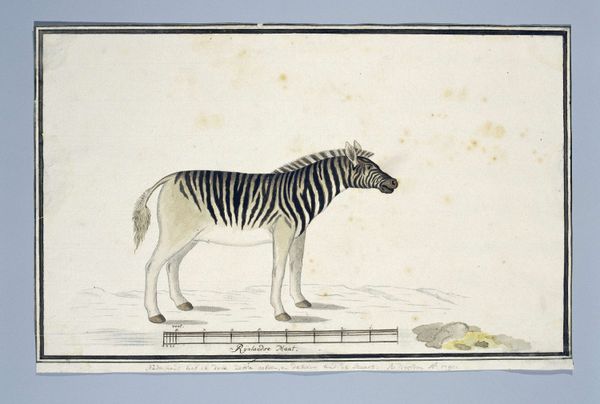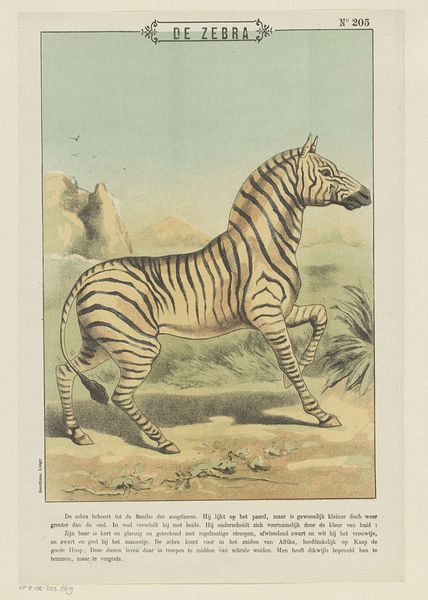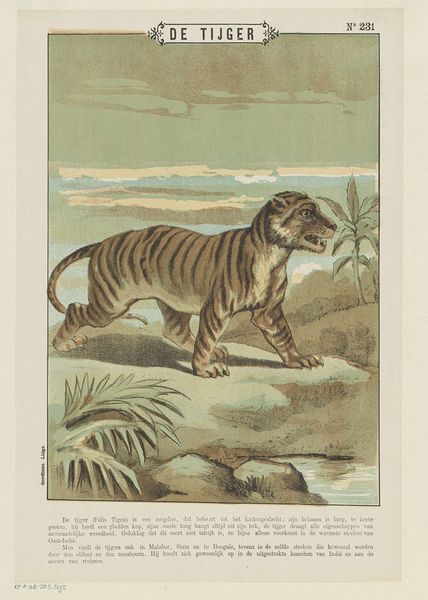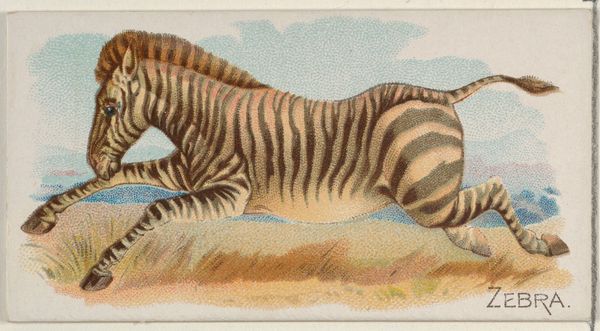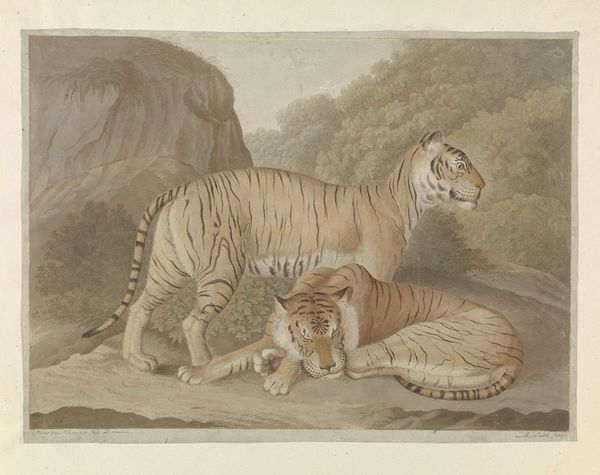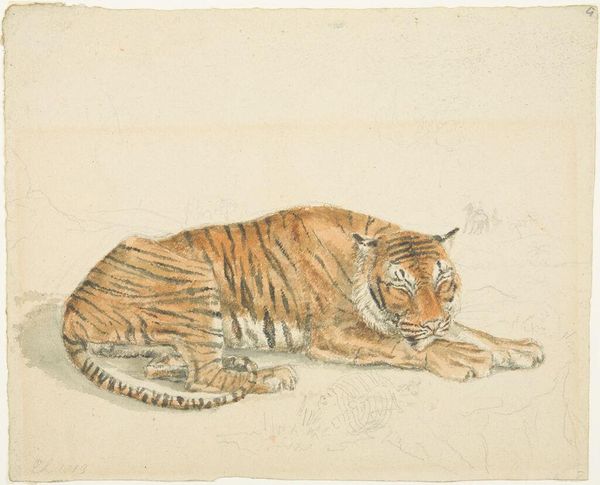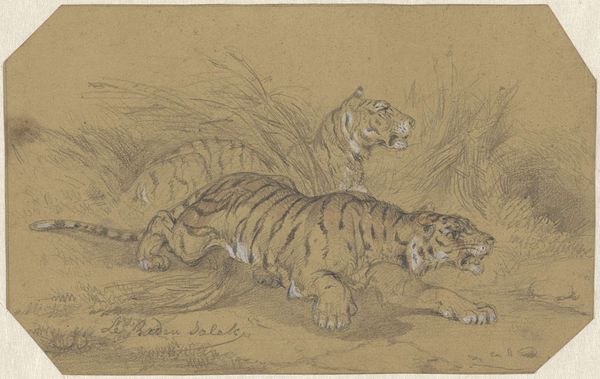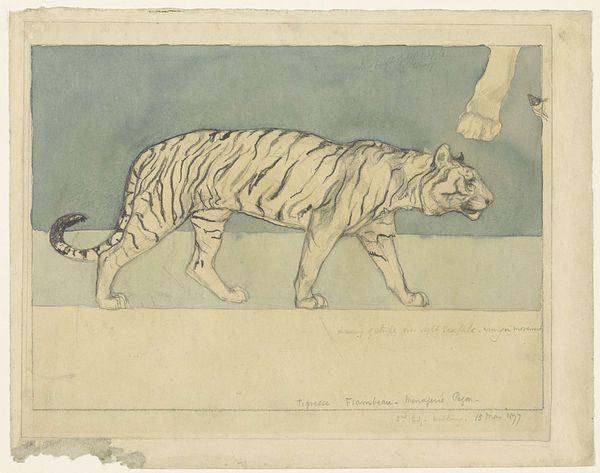
drawing, pencil, pen
#
portrait
#
drawing
#
landscape
#
coloured pencil
#
pencil
#
pen
#
watercolor
#
realism
Dimensions: height 660 mm, width 480 mm, height 233 mm, width 362 mm, height 206 mm, width 339 mm
Copyright: Rijks Museum: Open Domain
Curator: Here we have "Proteles cristatus (probably) (Aardwolf)" by Robert Jacob Gordon, believed to have been made between 1777 and 1786 using pen, pencil, colored pencil, and watercolor. What strikes you initially about this piece? Editor: The composition evokes a sense of loneliness and quietude, perhaps reflecting the animal’s solitary habits. There is starkness in its gaze as though it might be questioning why it is here, trapped within the picture plane. Curator: It's interesting that you pick up on that. During this time, travel and exploration were linked to power dynamics, with explorers and naturalists often depicting their findings in ways that affirmed their authority and reinforced existing social hierarchies. Do you see that reflected here in Gordon’s almost detached representation? Editor: Absolutely. While the meticulous rendering of the aardwolf suggests a desire for scientific accuracy, the symbols surrounding it tell another story. Note, for instance, the spiky shrub—an indication of foreign territory or even a biblical Crown of Thorns—that would associate this landscape with untamed regions ripe for colonial expansion and exploitation. Curator: It seems crucial to interrogate this image through that lens, recognizing how its visual vocabulary might have perpetuated racist stereotypes. I can’t help but wonder whether Gordon intended to represent more than just an animal; was he also attempting to justify land claims or dehumanize the inhabitants who were connected to the natural world? Editor: It certainly begs that question, doesn't it? And perhaps also prompts us to think more about humanity's relationship with our environment as expressed through artistic mediums. As stewards, as scientists, as predators—and also as subjects to our environments that determine what survives and flourishes over generations, much like this image will continue to live. Curator: Those power dynamics, and how this natural world came to be seen as commodities that could be possessed, even captured through art... Editor: These are heavy notions to consider from one modest drawing, yes. Curator: Indeed. It reminds us of the responsibilities inherent in the act of looking. Thanks for sharing your interpretation.
Comments
No comments
Be the first to comment and join the conversation on the ultimate creative platform.
